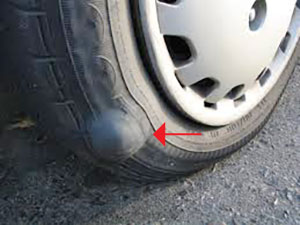How to Take Your Car Out of Winter Storage: a Checklist
Summer will be here soon. Sports car, classic car and hobby car owners, start your engines.
Actually, before you do, you’ll want to follow some simple steps to bring your summer ride out to play after a long winter.
Here’s a checklist of what to do — either on your own or at the shop — if you’ve had your vehicle stored.
Under the Hood
If you used a battery tender to maintain proper charge during storage, your battery should be ready to go. Check the tender to be sure the battery is fully charged.
If you’ve had the battery hooked up to a cheaper trickle charger, the output voltage may have gone high enough to cause overcharging. This can result in off-gassing and damage if you have a standard wet-cell lead-acid battery.
If your vehicle has been sitting for months on end with no recharger at all, your battery may be weak or drained.
Check the charge with an electronic tester. (Les Schwab Tires does two-part battery inspections free, any time.) If it’s low, you’ll need to get it charged. If it’s dead, and you need it replaced, your onboard computer system may need to be reset.
Look at the terminals to see if there’s any corrosion from off-gassing/overcharging. You can gently clean any residue off the posts and cable clamps with a solution of water and baking soda and an old toothbrush. Be sure to wear gloves and eye protection.
Make sure there are no cracks or signs of wear on the cables; jiggle them at the terminals to be sure the connections are snug.
Also look for vermin nests or chewed hoses, belts or cables. Verify air filters are clean. Check the oil dipstick to be sure the level is good enough to last until you can get an oil change. When you get service, have the technician check your spark plugs, cylinders and PCV and fuel filters.
Check windshield wiper fluid and coolant and add as necessary.
Tires
Check your air pressure. If it’s low, top it off with a home air compressor, or get to a tire store or filling station first thing and inflate to the pressure indicated on the driver side door placard.
Also look at your tread wear and inspect all tires for cracks and bulges. Be sure to look on the sidewalls facing the axles as well as the street side. You may need a flashlight.

Fluids
While you’re looking at the wheels, check under the car for any sign of fluid leaks. Even if you don’t see any, you’ll want to have the transmission, power steering, and brake fluids checked.
It’s also time for an oil change. Though your vehicle hasn’t been driven in months, the oil is old and may be contaminated by condensation or acids.
If you neglected to add fuel stabilizer to your gas tank before storage, fill up with high-octane gas and add some octane booster.
Brakes & Suspension
When you’re ready to start up, first make sure your tailpipe is clear. Give your vehicle some time to warm up. Let it run for a bit, until you hear a smooth idle, before putting it into gear. Don’t rev the engine.
Before you set out, tap the brake pedal to make sure it feels right. Make your first drive leisurely and listen for unusual noises. Watch the dashboard for any warning lights indicating something needs attention.
You may notice some noise while braking at first. This could be caused by rust that’s accumulated on the surface of the brake rotor or drum. If the noise is constant or recurring, have your brakes and pads inspected. Don’t ignore it. Be sure to have shocks checked as well.
Then enjoy the summer driving season.

